Arachis Hypogaea, popularly called groundnut or peanuts, is one of the most popularly consumed seeds across the globe. Belonging to the legume family, these plants are extensively grown in tropical and subtropical regions. India is one of the largest groundnut producers, along with China, Nigeria, the USA, and other countries. Groundnut is the primary source of edible oil, with more than 1.17 million metric tonnes consumed in the last year alone. Let’s check out the best practices to grow peanuts/groundnut at home below.
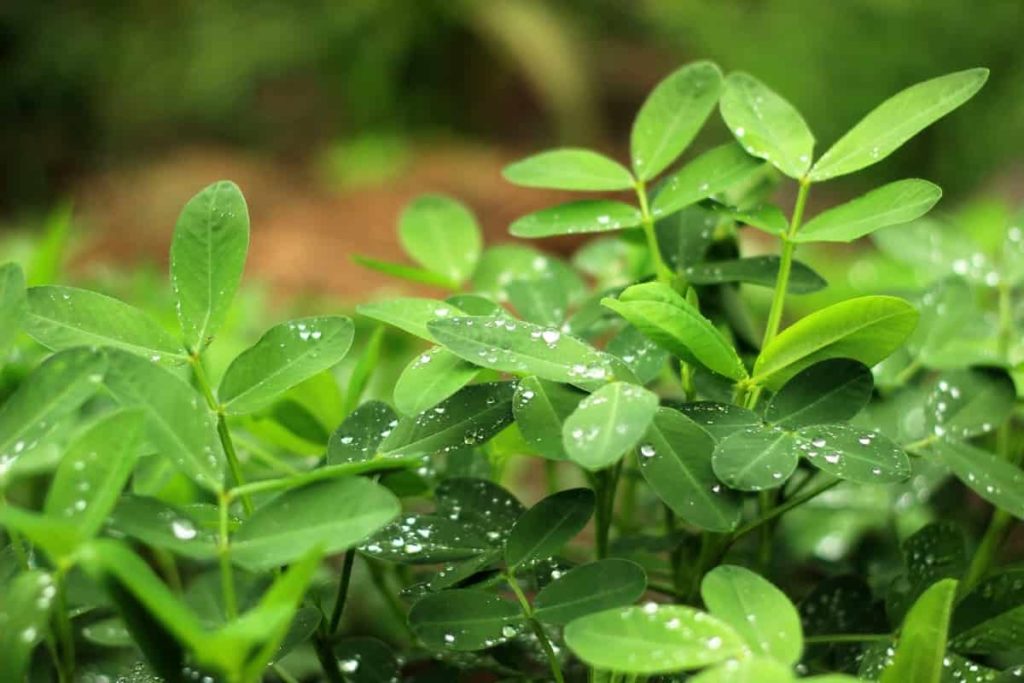
The reason is groundnut’s capacity to be turned into oil is around 45-50 percent of the dry seed weight of the same. Most households in India and China consume groundnut oil as cooking oil and prefer it over other available vegetable oils like sunflower. In addition, peanuts have a strong aroma and flavor, which makes them favorable to other edible oils. Therefore, peanut farming is more concentrated as a commercial crop than a domestic one.
The apparent reason is the high domestic market throughout the year, the inflation only increasing and adding fuel to its demand. Many farmers have begun to grow peanuts in whatever short pieces of cultivable land they had, as groundnut can be grown in small spaces due to their short height and reach.
Apart from being cultivated as a commercial crop, some people prefer to grow groundnuts on their own to harvest them and obtain pure groundnut oil from various methods. This is a part of eating healthy, which took over all across the globe after being hit worse by the pandemic. Below are some of the commonly asked queries regarding peanut farming at home.
In case you missed it: How to Grow Kumquat from Seeds and Cuttings: Check How this Guide Helps Beginners
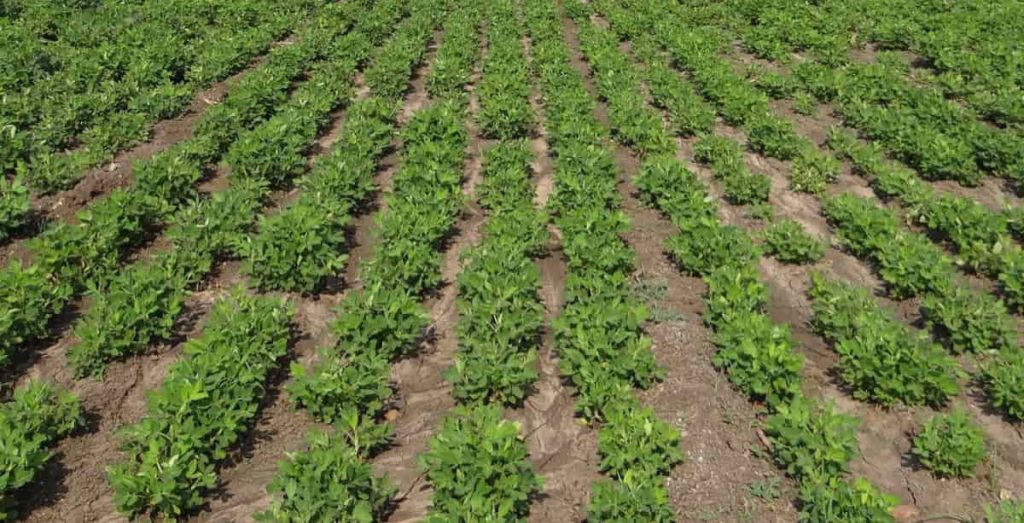
Best practices to grow peanuts/groundnut at home
How can I grow peanuts at home?
- Peanuts can be grown anywhere at home where the space required is hardly a foot long and wide. Thanks to their aesthetic shape, they can be expanded on the walls, on interior farms, in the garden, and even as a short interior décor plant. The process of growing groundnuts at home is not complicated at all. The time taken to grow groundnut anywhere is hardly 160 days, and it is quite feasible to produce. It can be comfortably grown in small flowering pots, let alone in large containers using multiple seeds growing more than just a single plant.
- The process is simple, selecting the location such that at least 8 hours of sunlight is cast on the plant right from the seed planting stage. This can ensure proper nutrition for the plant. The next step is to obtain productive and suitable soil. Best productivity is obtained from loose, rich, and drained soils with the right amounts of water retention capacity.
- The groundnut shell is broken to obtain seeds, which are sown 2 inches deep into the soil. Adequate water is supplied weekly, just enough to keep the soil wet. Groundnut is a dry-season crop with the minimum temperature required for the plant to thrive being 30-33 degrees Celcius.
- In around six weeks, the plant starts to flower, and that is when the soil mounds are placed all along the stem over the base of the plant. This helps support the growth of the groundnuts and for easier harvesting. The flowers wither off gradually, and the leaves start to turn yellowish, indicating the time to harvest is close. The soil needs to be ensured of moisture, especially during this particular period.
- Watering for the plant is restricted after around 135-140 days, roughly two weeks before harvesting the groundnut seeds from beneath the soil. This results in the yellowing of foliage, which is the right moment to carefully hand-pull the plant out of the soil, and the plant is dried in the sun till the plant is no longer active. The roots with peanut pods are then cut and dried in cool weather as a single layer exposed to air for 2-3 weeks before they are washed for dirt and other impurities. This is the generalized process of growing peanuts at home in containers mostly.
- The process remains similar even in the case of cultivation in farmlands, but care should be taken to sow the seeds spaciously so that the roots of two plants do not interfere. More prolonged exposure to sunlight can be an added advantage in the case of farming outdoors in the house’s backyard.
In case you missed it: Understanding Backyard Poultry/Chicken Farming at Home: Check How this Guide Helps Beginners
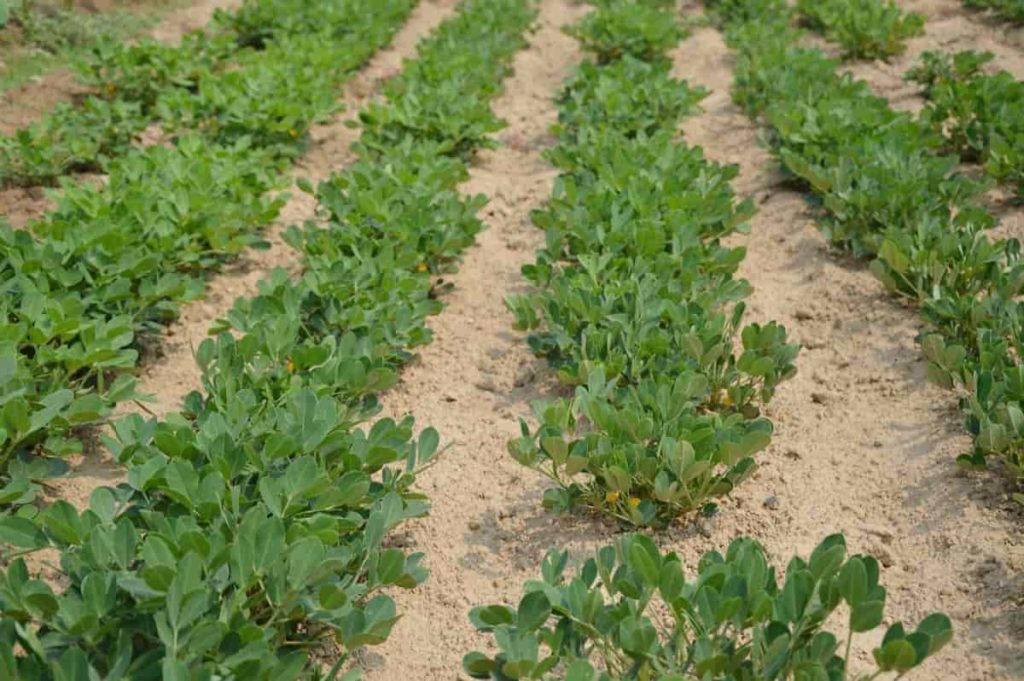
How long do peanuts take to grow?
- Peanuts are one of the most comfortable growing crops with minimal effort. They develop within a short span of 5-6 months from the plantation. The growth rate of the peanut plant is relatively more significant than the time taken for other root crops and is also profitable time-wise and space-wise.
- After around 40 days, the plant starts flowering up, and these flowers grow fully within a week. This is the time to add extra soil in the form of mounds at the base of the plant, which would aid harvesting.
- The plant is deprived of water after 135 days which causes the foliage to turn yellow and eventually dry. At this point, the plant’s roots are hand-pulled along with the plant and are sun-dried before cutting off the roots from the plant and cleaning them after drying them out as a layer in a cool, dry place.
Which is the best month to grow peanuts?
- The peanut plant thrives best in temperatures ranging from 35-45 degrees Celsius, a dry and warm-season crop. This can be ensured by planting the seeds into the soil at the early onset of summer so that groundnut can be harvested by the end of the season.
- In the Indian subcontinental conditions, the best time to plant groundnuts in the soil would be the end of February or March. More or less similar conditions prevail in China too.
- In countries like Nigeria, where the temperatures are always hot and humid, the month of planting does not make much difference if only other factors like shade and watering are assured. The plant might not be able to sustain too much sun and requires shade along with an adequate water supply once a week enough to keep the soil moist.
How many peanuts can one acre produce?
- Peanuts require less space to grow as they are short and do not produce many flowers, and their roots do not spread much. This makes it possible for a more significant amount of cultivation in small bits of cultivable land. The feasibility of growing on farms on a large scale is one of the reasons to prefer farming groundnuts, given the high domestic market demand it has.
- Around 20-22 quintals of groundnut yield can be obtained per acre of groundnut. This can again vary from region to region but still India’s top commercial crop.
In case you missed it:
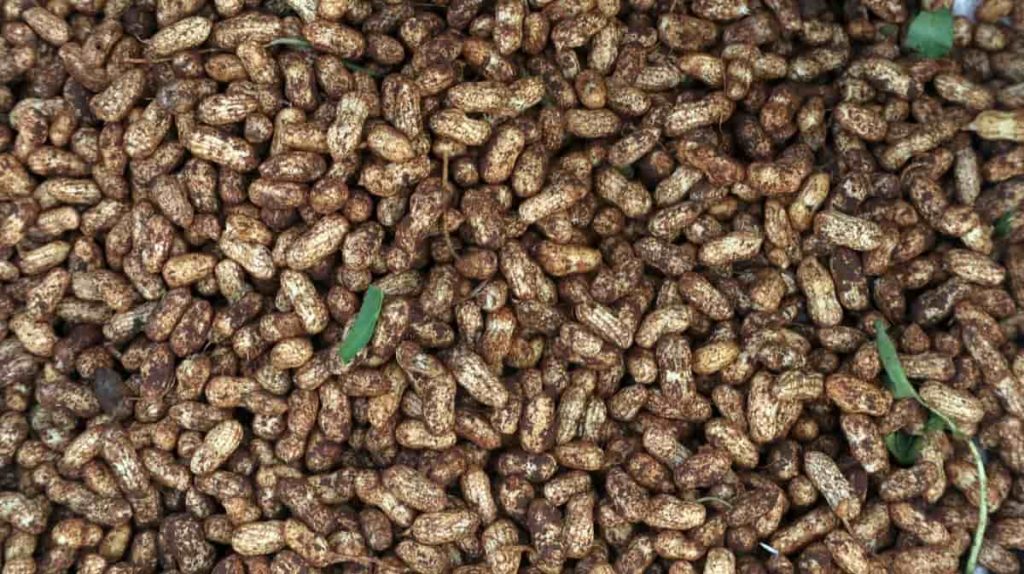
What is the lifespan of the peanut plant?
- Peanut plants are not supplied water two weeks before the time of harvesting. This makes the plant grow weak and dry out, beginning with the yellowing of foliage. The withering of the plant follows this after the general duration of around 22-25 weeks.
- The plant is then rooted out by hand to obtain the groundnut yield at the root base. This implies that the harvesting period of 150-160 days is the lifespan of a groundnut plant. Therefore, the plant’s lifespan can be calculated depending on the harvesting period.
Do peanut plants need full sun?
- Yes, peanut plants do require full sun, the crop being a warm-season crop. All the yield of the plant is obtained from the roots, and to grow strong and healthy roots, it has to be in the best soil and needs the right amounts of sunlight to thrive.
- Peanut plants require 5-7 hours of quality sunlight to grow into healthy plants within the expected durations. This can vary from season to season, but on average, 6 hours of daylight is a must for the plant.
How much water do peanut plants need?
- Peanut plants, though warm-season, and hot crops require adequate water supply regularly. Therefore, the plant is supplied with water once a week all along its course of growth, in quantities that are well enough to keep the soil rich in water content.
- When the peanut plant starts to flower, extra mounds of soil are placed at the base of the plant, which is to be kept moist for two weeks before harvesting. After that, the quantity of water supply and the frequency of watering purely depends upon the temperature and geographical locations, followed by the climatic conditions.
- In countries like Nigeria, where temperatures are high, the plant would require more water during the flowering stage, as the soil would dry up soon and would leave the mounds of soil to crack up, not supporting the harvest. Hence, the water required must be supplied according to the temperature and climatic conditions.
In case you missed it: Common Country Chicken Diseases: Symptoms and Treatment
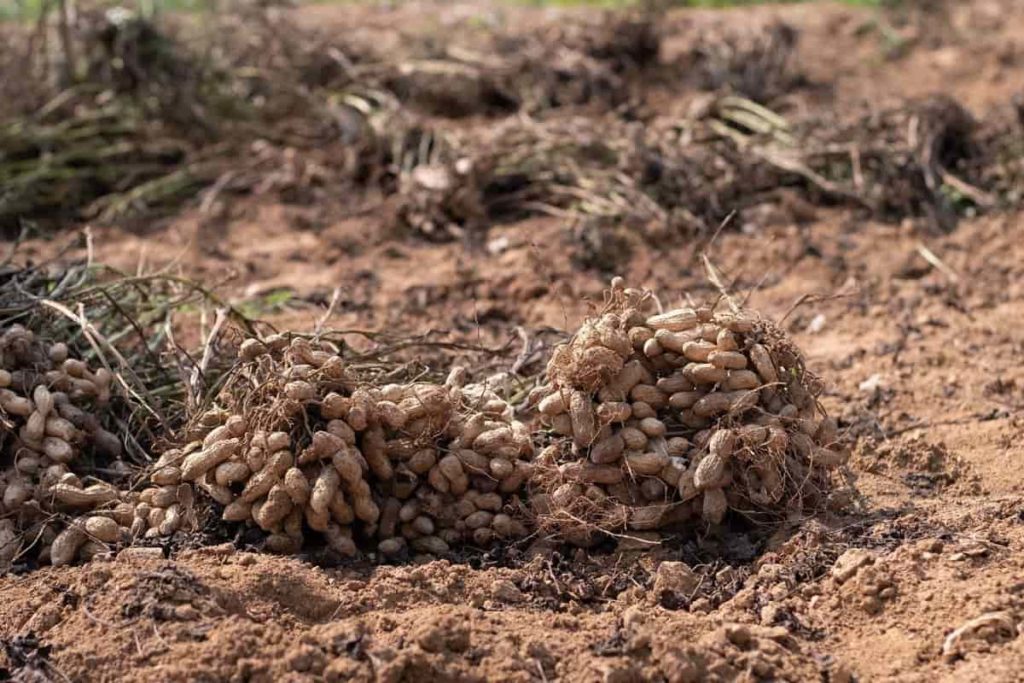
How can we increase the yield of peanut plants?
- The yield of peanut plants depends upon factors like richness of the soil, frequency, quantities of water supply, sunlight exposure, temperatures of the surroundings, etc. In addition, the variety of groundnut seed planted also affects the growth of the soil.
- The yield can be increased by using hybrid seed variety and ensuring the soil is nutrient-rich. In addition, getting the soil tested for productivity can be a better move to provide proper nourishment for the crop throughout the growth duration.
- Using natural fertilizers can also increase the yield and help obtain more excellent produce than expected. These can be done to better the yield of the plant. Other factors like pest control and artificial fertilizers can be used but damage the soil’s naturality.
What type of soil is best for peanut plants?
- Peanut requires loamy soil, which is well-drained and can retain enough water to stay moist. In addition, the soil must be loose and rich in nutrients that nourish the seed from the germination stage and later adequately support the growth of roots.
- The soil must allow the free spread of groundnut roots and ensure proper nutrients for the plant to yield its best. Adding natural manure can be a significant step toward improving soil productivity.
Can we grow peanuts in pots?
- Yes, peanuts can be grown in pots. In fact, peanuts are preferably grown in pots in case of growing at home, given that they are very feasible to handle and perfectly suit the requirements. In addition, pots retain the soil closely and can ensure water retention in the right quantities, along with manure.
- Growing groundnuts in pots can be used as a step toward interior decoration, with the plant resembling decoration plants like bonsai, the only difference being the valuable seeds in the roots.
What is the fastest way to germinate peanuts?
- Peanuts naturally grow much faster and yield within half a year, which is far quicker than most vegetable crops. The time taken for a seed to grow into a plant and yield another seed is hardly over 160 days. Though this count depends upon factors like soil fertility and other contributing elements, the growth rate is high.
- To increase the rate of germination in peanuts, priming can be done. The process is to soak the peanuts in water for 24 hours, followed by placing them in highly rich soil for another 24 hours, with sunlight casting on the seeds for 6 hours. This initiates the seed germination process before actual planting. Thus, the yield can be obtained faster.
In case you missed it: A Guide to Understand Vertical Urban Farming/Gardening: Check How this Helps Beginners
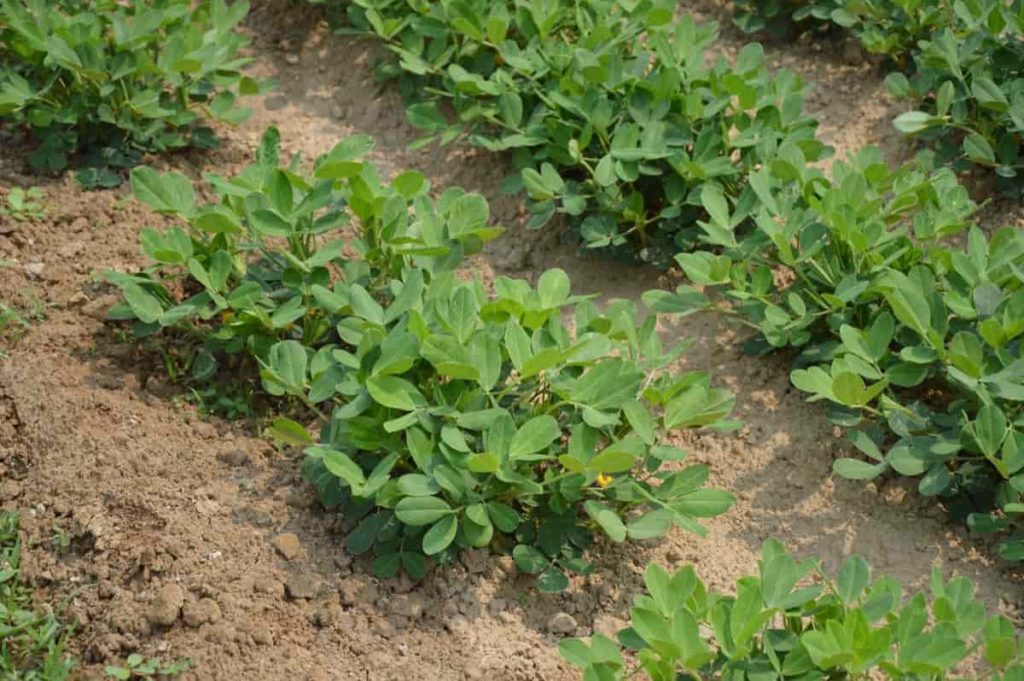
Conclusion
Peanut farming has been extensively done in various countries, especially India, where consumption is considerably high. Not just for cooking oil, peanuts are used for various reasons like cooking additions to various dishes; they are made into chutneys to be served along with breakfasts, fried raw, and added with spices to be consumed as snacks. The domestic market of peanuts is always on a good run, and it is advisable for people with cultivable land, either a tiny bit or extensive land, to cultivate groundnuts.
- Effective Fish Pond Construction Techniques for Beginners
- Irrigation and Water Management in Pineapple Farming
- Blossom to Harvest: Mastering Flowering and Pollination in Papaya Farming
- Pig Fattening Essentials: From Selection to Sale for Beginners
- Raising Wagyu Cattle: A Complete Guide for Premium Beef Production
- Soil Types and Their Water Holding Capacity
- Optimizing Irrigation Schedules for Coconut Groves for Enhanced Yield
- Espresso Your Garden: Coffee Grounds for Healthier Acid-Loving Plants
- The Best Soil Mix for Snake Plants: How to Mix Your Own Snake Plant Soil
- Green Thumb Success: Expert Tips for Cultivating Greenhouse Beans All Year Round
- Bloom All Year Round: The Ultimate Guide to Indoor Hyacinth Care
- Eco-Friendly Gardening: How to Make Liquid Fertilizer from Kitchen Waste
- Ultimate Guide to Grow Anise in Pots: Explore Seed Propagation to Harvesting
- Guide to Raising Chester White Pigs: Discover Breed Facts to Growth Management
- Mastering the Elegance: The Ultimate Guide to Weeping Cherry Tree Care, Planting, and Maintenance
- Ultimate Guide to Planting Garlic in Grow Bags: Growing Strategies for Beginners
- How to Fix Spider Plant Leaf-Related Problems: Natural and Organic Remedies
- 10 Reasons Why Your Tulsi Plant is Shedding Leaves: Home Remedies and Solutions
- Optimizing Growth and Yield: The Advantages of Palm Bunch Ash Fertilizer
- Utilizing Neem Oil Extract as a Natural Pesticide for Hydrangea
- From Soil to Harvest: Various Ways in Which Farmers Can Use AI Tools
- Steps to Encourage and Induce Citrus Flowers: A Comprehensive Guide
- How to Fix Snake Plant Leaf-Related Issues: Natural and Organic Remedies
- Transform Your Garden into a Fragrant Oasis with Raat Ki Rani (Night Blooming Jasmine)
- Discover the Ideal Chicken Breeds for Philippine Farms
- How to Create a Poultry Egg Farm Business Plan for Profits
- Grow Lemon Cucumbers Like a Pro: Insider Techniques for Bountiful Yields
- Ultimate Guide to Caring for Your Pink Princess Philodendron: Tips for Thriving Variegation
- Areca Nut Profit Per Acre: Calculating Yield and Cost of Cultivation
- How Kaveri Chicken is Becoming a More Profitable Breed in Indian Backyards
- Transform Your Barn: 9 Steps to Convert a Horse Stall into a Chicken Coop
- Exploring Suffolk Sheep Disadvantages with Limitations and Challenges
- Guide to Solving Potted Lemon Tree Problems: How to Revive Lemon Tree in Containers
- Steps to Encourage Female Pumpkin Flowers: Best Strategies for More Flowers and High Yields
- Ultimate Guide to Yellow Raspberries: Exploring from Planting to Care
- Ultimate Guide to Planting Ginger in Grow Bags: Growing Strategies for Beginners
